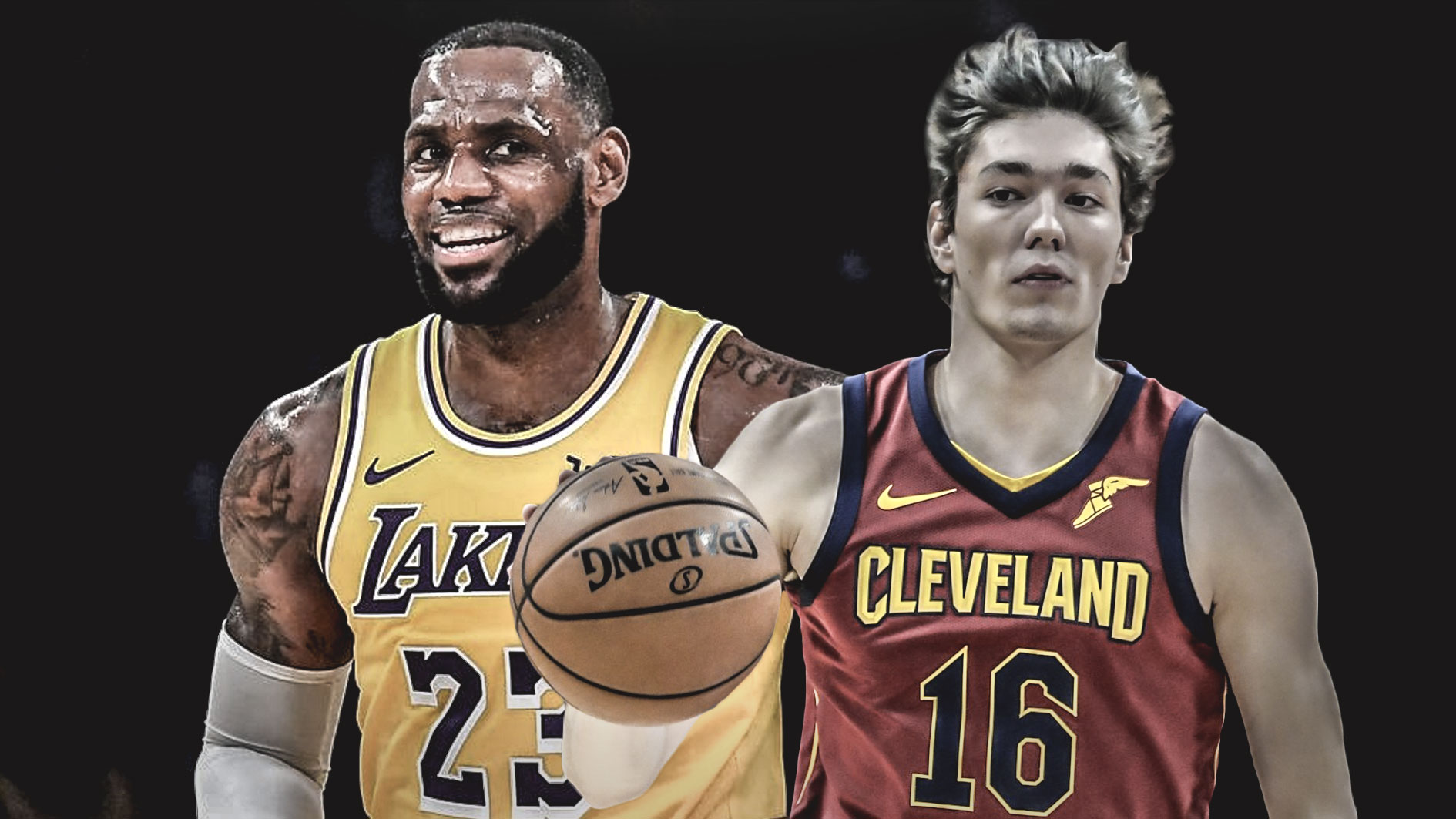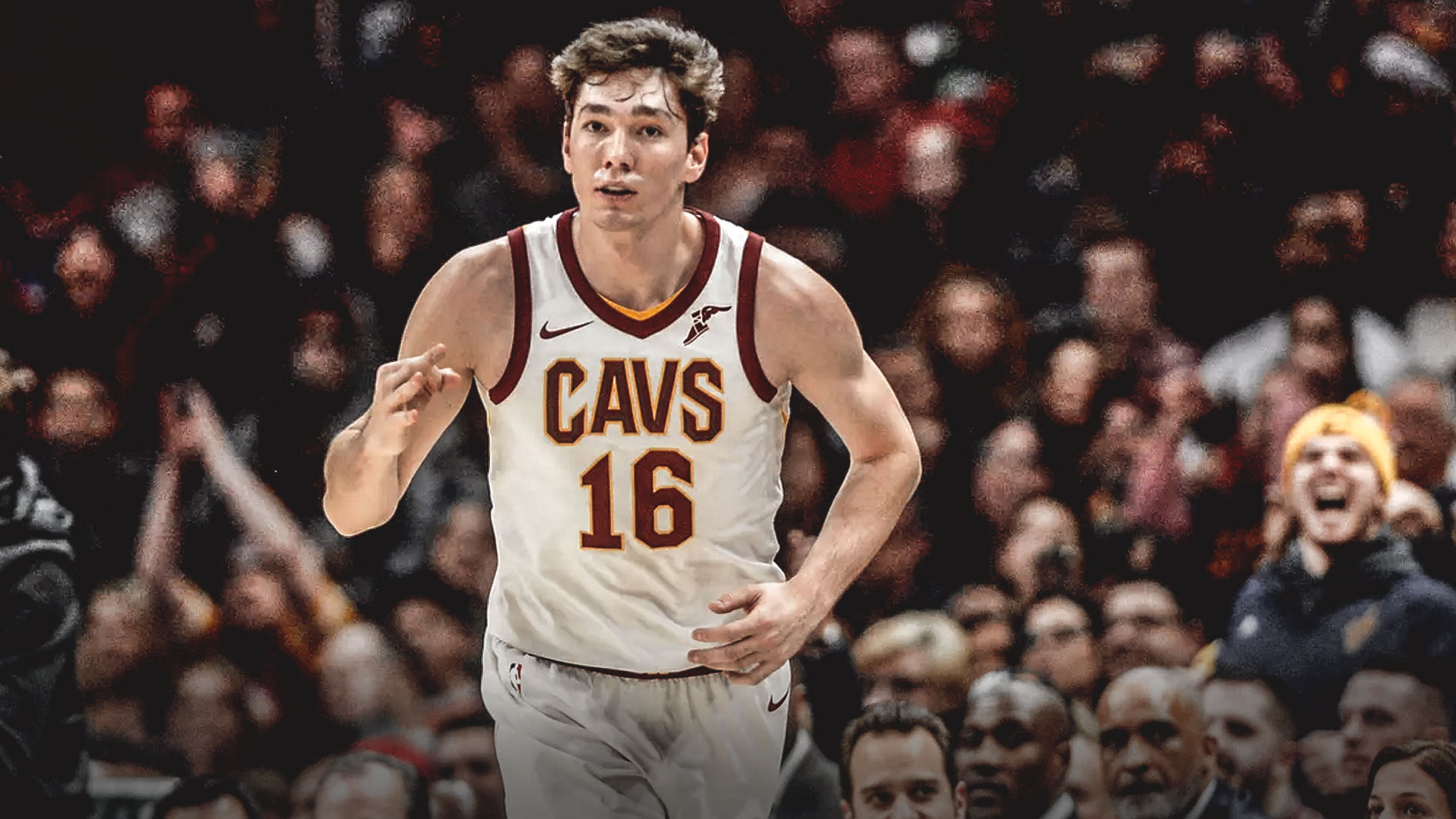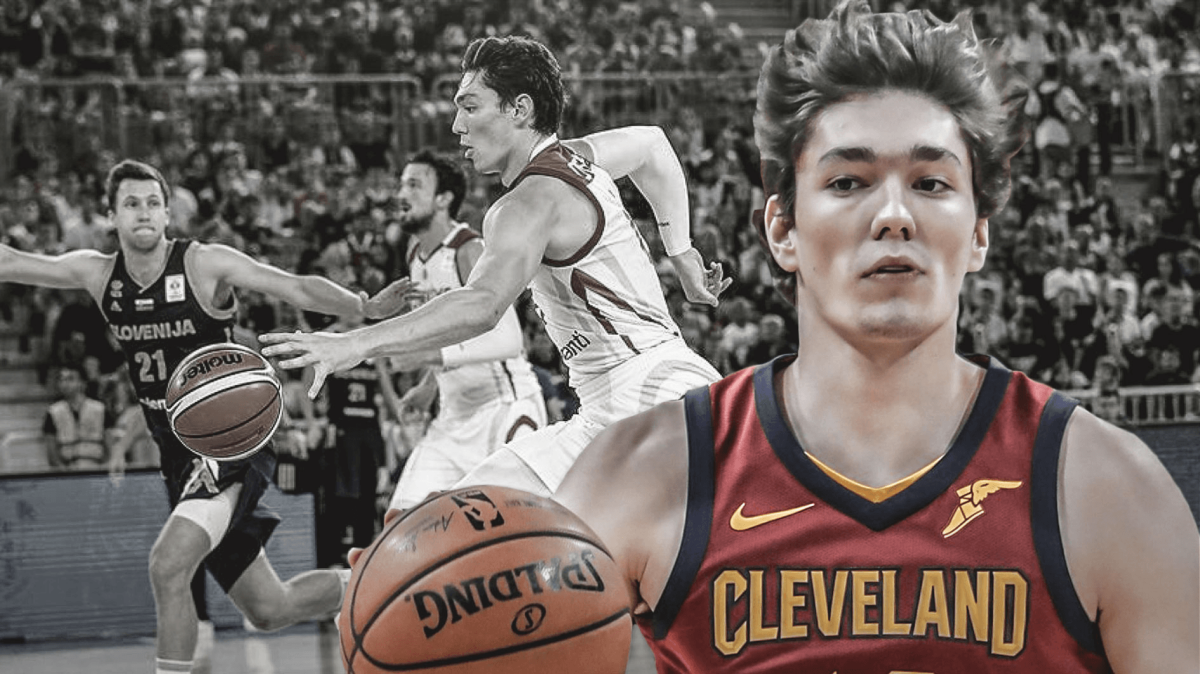With averages of 19.5 points, 6.5 rebounds, 6.0 assists and 1.0 steal per game (per Basketball Reference), Cleveland Cavaliers second-year small forward Cedi Osman has burst onto the national scene in a big way. This might be the most national acclaim since his days starring for Turkey’s Anadolu Efes.
He’s looked like the team’s best all-around player after two games, knocking down jump shots efficiently, crashing the glass, creating shots for his teammates as the primary playmaker, getting to the rim at a high rate (37.0 percent of his field goal attempts have been in the restricted area) and playing solid defense against a couple of the most elite small forwards in the league.
Starting in place of former Cav LeBron James, the spotlight on Osman’s game has been magnified. However, despite the immense pressure that comes along with filling in James’ King-sized shoes, Osman has been cool as a cucumber and dominated in the Cavaliers first two appearances.

Even when guarded by elite defenders like two-time Defensive Player of the Year Kawhi Leonard and four-time All-Defensive team selection Jimmy Butler in his first two games of the season.
In fact, the only issue that Osman seems to have so far is failing to disperse the ball evenly while being the team’s primary playmaker.
According to NBA Advanced Stats, Osman has passed the ball to All-Star Kevin Love 13.5 times per game and starting point guard George Hill 13.0 times per game but has only passed the ball to starting center Tristan Thompson 3.0 times per game and starting shooting guard Rodney Hood 1.0 time per game. His passing balance needs to be more pronounced or he’ll be an easy target for strips and blocks when players start to notice his passing tendencies.
Shooting 51.9 percent from the field (13.5 attempts per game) and 66.7 percent from three-point range (4.5 attempts per game), Osman’s percentages are sure to dip over the course of the season. His production in transition will be the least likely to change, no matter how much defensive pressure he attracts.
However, it’s only a matter of time before teams start to circle him on their scouting report and, as they start to ramp up the defensive pressure on Osman, he’ll have a tougher time converting his jump shots.
Per NBA Advanced Stats, only 7.4 percent of Osman’s jump shots have had “tight” defense (a defender within 2-4 feet of the shot attempt). The rest of his shot attempts have been “open” (a defender within 4-6 feet of the shot attempt) or “wide open” (no defender within six feet of the shot attempt).
Maybe it’s too early to make bold proclamations but two games into the season, Osman looks like a surefire Most Improved Player of the Year candidate.

Even if you convert last season’a averages to their per 36 minute counterparts, Osman has increased his production tremendously; he’s increased his scoring by 7.9 points per 36 minutes, his facilitating by 4.2 assists per 36 minutes and has virtually doubled his win shares per 48 minutes from .064 to .135.
Those numbers come in a relatively insignificant sample size, with just 2.4 percent of the season’s games having been completed. However, watching the ease with which Osman has made plays for others and his confidence in his ability to knock down shots whether spotting up or playing off-the-dribble, he’s clearly much more comfortable this season.
